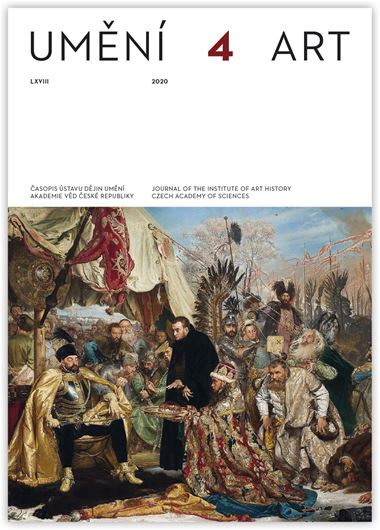Lenka Kerdová
1920s and 1930s Prague Architecture with Special Focus on the German Cultural Circle: Adolf Foehr, Fritz Lehmann, Rudolf Hildebrand
The interwar Prague architecture scene was a very heterogeneous milieu where Czech, German, and Jewish architects met but also missed each other. The study focuses on Prague’s German-speaking group, which formed a unique and complicated structure. Prague’s German-speaking architects included Czech Germans (Deutschböhmen), Jews from Czechoslovakia as well as the rest of the former monarchy, Germans, and Austrians. Given this high level of diversity within this broadly conceived group, the author presents a division of German-speaking architects according to their orientation towards a specific cultural environment, i.e. into a German-oriented group and a circle on the borderline between the Czech and German cultural milieu. The first group, on which the article focuses, exhibits more common characteristic traits, creating certain mini-centres within Prague’s cultural scene. On the basis of three exemplary cases of architects from this German cultural milieu, the article introduces important moments defining Prague’s German architecture scene. In the case of Adolf Foehr, this has to do primarily with the activity of Prague’s German housing associations. In some parts of Prague, German apartment buildings had a major impact on the character of the quarter. Also important in addition to a certain stylistic specificity are personal connections among architects and construction builders, as well as between architects and Prague authorities. One of the methodological backbones of the entire research consisted in reconstructing this imaginary network of ties and relations. Fritz Lehmann’s example illustrates the complicated situation at Prague’s German Technical University and the backdrop of rivalry within the German-speaking milieu. Architect Lehmann is also author of the reconstruction of the German House (Deutsches Haus) and a few published articles that untangle the complicated welter of Czech-German connections and potential nationalist antagonisms. Rudolf Hildebrand, the article’s last exemplary architect, corroborates its proposed observations in his uniquely preserved personal memoirs.
Full-text in the Digital Library of the Czech Academy of Sciences:
https://kramerius.lib.cas.cz/uuid/uuid:e4201884-dba7-48cf-9f77-c03329674192
< back

